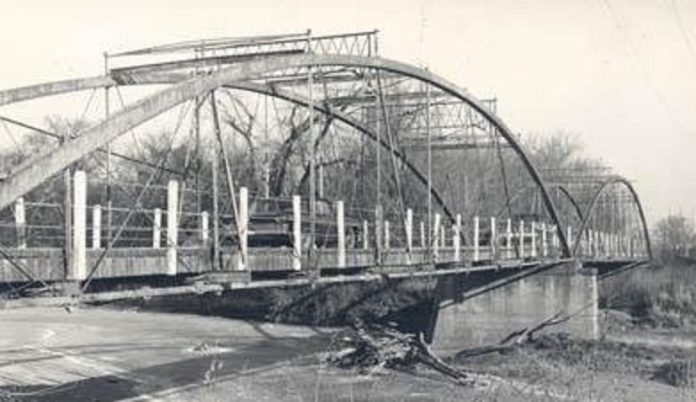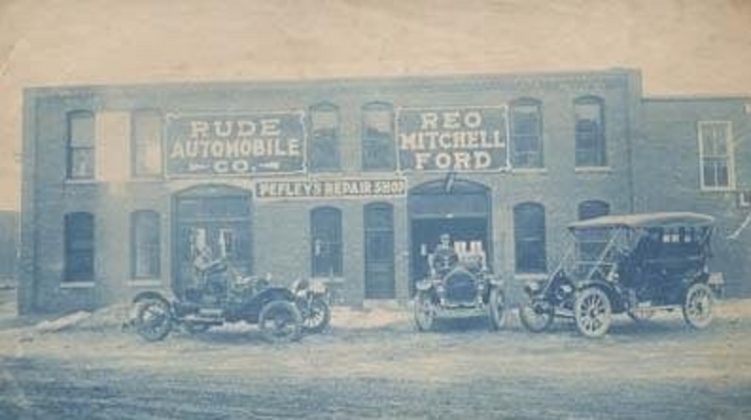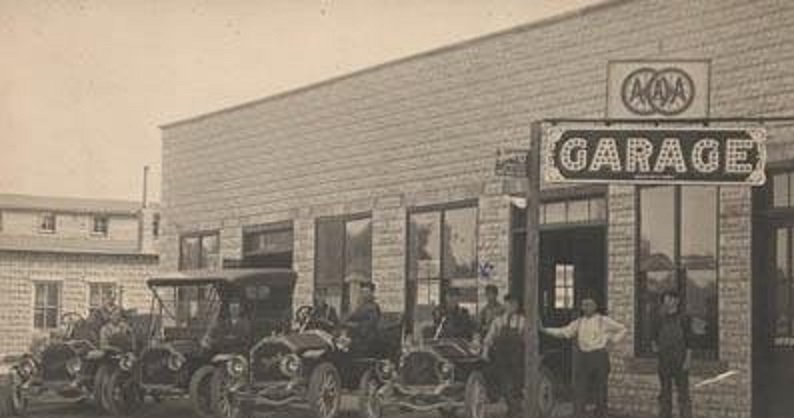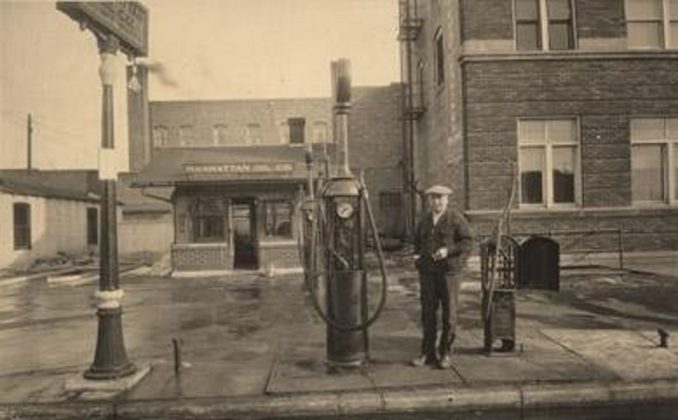
Back in the day, the main road from Perry to Minburn and southward came out on Otley Avenue to 12th Street and then turned south to Iowa Street, then east to 16th Street, then south for one mile and then to the east.
At Minburn it came in at the northwest part of town. The road east from 16th and Iowa streets was called “Lake Road” because at one time much of it used to be in Potts’ lake.
The road to Dawson went out on west Park Street and crossed the Hall bridge, and the road to Bouton and Woodward went out on McKinley Street, past the Oak Grove School and came into Bouton from the west.
The first bridge in Perry was the Bennett bridge just west of town. Before this, Abraham Bennett had a ferry to get settlers on the west side to Alton for mail and later to Perry for supplies. This bridge is sometimes called the Carhill or Wolf bridge.
The iron for the Atkinson bridge came into Perry in the fall of 1874. This bridge was just a
little south of the Atkinson Mill at the small town of Undine, north of modern Dawson on the old Fort Des Moines to Jefferson stage line. About 1950 the river was moved and road changed, with a new bridge built on the road north out of Dawson.
The Hall Bridge named after Horatio Hall, a nearby farmer, and was put up in the 1880s. In 1935 the State Highway Commission built a new bridge on 141 and in doing so removed all the sharp curves and a steep hill, taking out the “scenic route” to Perry.
The first bridge south of town was the Shively bridge, built just upstream from the old Thornburg Mill. After the milled stopped in 1882, there was little use for the road so it was moved, and the first Graney bridge was put up. It was washed out in 1910 but soon replaced.
The old Shively bridge was taken down, moved farther downstream, reset and renamed the Garroute bridge.
The first car in Perry was a Currier, owned by Lawrence Tiernan and George O’Malley in 1902. Coming in next was Dr. Doidge’s Rambler.
Later it happened, as Dr. Doidge was driving to Dawson to see some patients, that the steering rod fell off, causing the car to roll over. He received a broken collar bone and badly torn ligaments in his back and shoulder.
Down by Minburn, Barb Glyde picked up the first Cadillac.
The first garage was that of Jacobs and Rube on Railroad Street. The next shop was that of Allen Cox, also on Railroad Street. The first so-called gas station was the Standard Oil station at First Avenue and Warford Street. The next one was called “Go-gas” a little to the south. Before this, gasoline was bought at the garages.
Rural paving came to the voters in Dallas county on May 9, 1929, and the next year pavement was put across the county through Redfield, Adel and Waukee. At the same time, a line was put in from Adel to Perry, completed in July 1935.
During the summer of 1941, pavement was extended from Perry to the south corner of Dawson. Later it was extended to Sioux City.
A short cut to Des Moines that branched out of Grand Junction and came through Perry was paved and became a part of 144 from Perry to Fort Dodge.
When the Inter-State Highway way put in around Des Moines, a new road that followed the
interurban track was opened up and paved. At on time, the heavy traffic on this Des Moines-to-Sioux City route was good for Perry. There was once so much traffic at the junction of 141 and 169 that the State Highway Commission put in all-night lights at this intersection.
Before the Bergman law was adopted in 1930, there was little uniformity of the state roads. They was called by various names. The road from Des Moines to Lake Okoboji that passed through Perry was called the Okoboji Trail/Fish Trail. The road going through Dallas Center and Panora was called the Panora Speedway, and the road west from Adel was the White Pole Road.




















